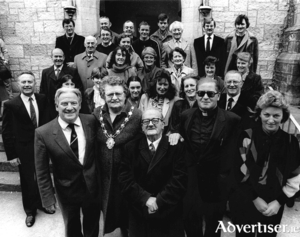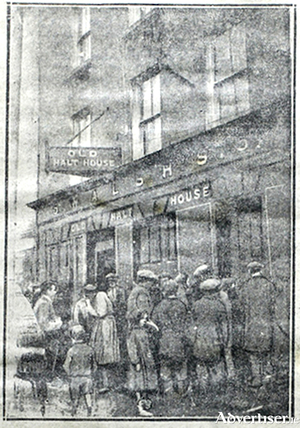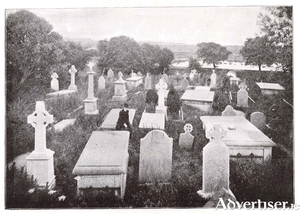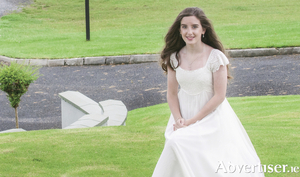Search Results for 'Augustinian Church'
17 results found.
Heavenly music in Galway

On November 26, 1905, the new organ in the Augustinian Church was launched at a High Mass. The organ was placed ‘in the western gallery of the church in a handsome varnished case of specially selected woods, stands 26 feet high and 25 feet wide. The front pipes, some of which are over 18 feet long, are gilt and present a superb effect. The sides of the organ are recessed to leave room for an augmented choir and for the present, the organ is blown by hand at one end of case; at a future time it is hoped to apply a hydraulic motor to do this work. There is great variety in the tones of the various stops and the general effect of all combined is truly magnificent. The entire work reflects great credit on the builders who built it at their factory in Dublin. The number of speaking pipes in the organ is close to 2,000.'
Mícheál Walsh, The Old Malt

On September 22, 1920, 12 Black and Tans burst into the Old Malt Pub on High Street, breaking down the door and rushing upstairs to where Mícheál Walsh’s wife and children were sleeping. They demanded to know Mícheál’s whereabouts and then they searched the building, firing shots, exploding grenades, terrifying the children, and causing extensive damage to the property. They also broke open the safe and stole its contents, as well as taking money from the till in the bar. Clothing, alcohol, and tobacco were also stolen during the raid. The taps were opened on the barrels and then doors, cabinets, and furniture was smashed. The damage was estimated at £1,000.
Forthill Cemetery, 1905

It is often said that one cannot claim to be a true ‘old Galwegian’ or ‘auld shtock’ unless one has some relations buried in Forthill Cemetery at Lough Atalia. It is probably the oldest cemetery in Galway. The Augustinians have been associated with it since the year 1500. The Augustinian convent or priory was built there by Margaret Athy at the request of a friar, Richard Nagle, and it probably stood on level ground at the upper level of Forthill. The grounds of the priory extended quite a bit along the shores of Lough Atalia, at least to the site where St Augustine’s Well is today. Nothing at all remains of the priory except some drawings on the 1625 and 1651 maps.
Sweeter than Roses concert tomorrow night
Oranmore soprano, Helen Hancock will present an evening of singing and music in the auditorium of Galway Community College, Moneenageisha tomorrow Friday March 22 at 8pm.
Concert in Augustinian Church in aid of St Vincent de Paul
Helen Hancock, a soprano from Oranmore will present a beautiful evening of singing and music in the Augustinian Church, Galway at 8pm on Friday November 9. The concert will also feature her singing teacher, international tenor Owen Gilhooly along with cellist Peter Sébestyén and pianist Ramin Haghjoo.
Musical treat to raise funds for Tomorrow for Tomás

A concert later this month will raise much-needed funds for Tomorrow for Tomás, a charity set up to assist Tomás, a bright chatty boy originally from Renmore and now living in Corofin, who has faced some major challenges in his first seven years.
Refurbished home in the heart of the city

Sherry FitzGerald is offering No 14 Middle Street to the market for sale by private treaty. This property is located close to the social and cultural centre of Galway city, directly across the road from An Taibhdhearc Theatre and the Augustinian Church.
Inaugural Galway Camino walk this Saturday
The inaugural Galway Camino pilgrim walk to seven holy sites around Galway city will take place this Saturday 23 September at 12 noon.
Aimee Banks to sing at Fringe Festival

AIMEE BANKS, the 15-year-old soprano who shot to fame representing Ireland at the Junior Eurovision Song Contest 2015 in Bulgaria, will give a concert at the Augustinian Church as part of the 2017 Galway Fringe Festival.


